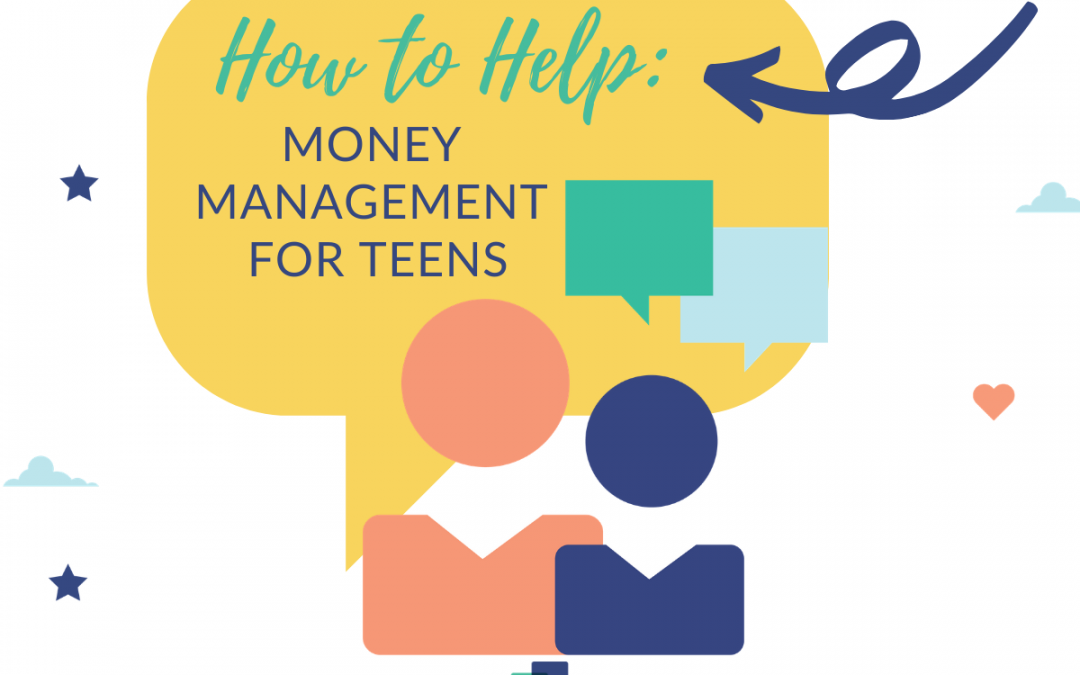Your high schooler’s busier than you. (Okay, maybe not.) But between cross country practice, homework (ugh — how hard
Even though your kiddo’s busy, it’s still important to put that math homework to good use because it could affect your child for the rest of his life.
Check this out.
When Caroline was 14 years old, she and her dad decided to invest $2,000 every year for five years. Call it a little experiment, if you will. Here’s what it looked like:
Age 14: $2,000
Age 15: $2,000
Age 16: $2,000
Age 17: $2,000
Age 18: $2,000
Caroline and her dad invested no more money than that initial $10,000.
Fast forward 51 years. How much money did Caroline have after 10 percent annual return, at age 64?
$1,184,600.
How’s that for some incredible math? (Skip solving for x.)
Contents
Why Learn About Money Now?
Investing is so important — but that’s not all your child should spend time learning. Unfortunately, high schools and colleges just don’t teach basic
It changes lives when they learn this stuff early:
- Your kids show up equipped to handle debt. The less debt a child has over his lifetime, the more he’ll be able to do the things he wants to do, such as buy a home, purchase the things he wants (not on credit), retire and more.
- It’s fun. When you see money compound, your eyes fall out of your head. It’s more fun than living paycheck to paycheck, that’s for sure.
- It’s habitual. Get it together early on and those good money habits will follow your child the rest of his life. Encourage him to put 10 percent of his income into a retirement account and increase that account a little bit at a time. Your child will be in good shape if she keeps it up till retirement!
- It makes him a lifelong money learner. Books about money these days are so dang good. And so inspiring! Check out Why Didn’t They Teach Me This in School?. He might start stuffing it into his trig book and devouring it during class.
Money Topics Your Child Won’t Learn in School
Here’s what your child needs to learn about money management from you, through books and other methods.
Budgeting and Other Fun Stuff
Budgeting 101 is typically not an essential high school class, so check out the basic budgeting steps your child should know. Why not let him in on all your expenses and bills so he sees what you do?
- Add up expenses like rent, utilities, internet, groceries, clothes, household supplies — you know, those fun adult things you get to tackle each month.
- Add up income. How much money do you make from all income sources?
- Subtract expenses from income.
- Understand the difference between “needs” and “wants.” Start applying this now. “Needs” should only include necessary items, like rent, utilities, groceries and more. “Wants” include coffee runs, entertainment and expensive jeans. A really crucial lesson for kids to understand!
- Sign up for automatic bill pay. Incurring extra fees or interest when you fail to pay your bills on time is a real bummer — and it can ding your credit. Show your child how you pay for everything on time.
Make it fun! Your child can tap into lots of budgeting apps, like YNAB and Mint.
College Costs
Encourage your child to learn about college costs, including a few keywords:
- Tuition: The cost of taking classes at a college
- Room: On-campus housing
- Board: Meals on campus
- Activity fee: Fee to go to events on campus
- Total cost: The sticker price — most students won’t pay this amount!
Let Quatromoney help you (and your child) understand college costs. Quatromoney helps you assess how savings and cash can help your child reduce the need for loans. The company helps your child plan for four years, not just the first year of college.
Student Loans
It’s really important to understand student loans — heck, all loans! — because your child might need them to pay for college.
Student loans seem super complicated, right? They are. For now, let’s reduce student loans into just a few quick facts:
- You pay interest when you borrow. Interest is the amount your child pays (a percentage of a loan) to borrow money. In other words, when your child borrows money for student loans, it costs more money to pay them back. The longer your child takes to pay them back, the more he owes. (Does your child understand this stuff?)
- Take federal loans first and private loans as a last resort. (Let’s go over this more in a second.)
- Get to know the college’s financial aid office. Financial aid officers can help your child navigate everything. Get to know the financial aid personnel at your child’s college. You’ll be happier for it.
Now, onto the basics of federal and private student loans.
Federal Student LoansThe U.S. Department of Education offers Direct Unsubsidized and Subsidized loans and Direct PLUS loans, including Grad PLUS loans for graduate and professional students and Parent PLUS loans for parents of undergraduate students.
What to know: Federal student loans trump private student loans for several reasons:
- No credit checks are involved (although Direct PLUS loans do require a credit check).
- Your child might qualify for an income-based repayment plan once he graduates, which means it depends on how much money your child makes once he graduates from college.
- They’re most often forgiven, which means your child may not have to repay. This depends on which career your child chooses after graduation.
- Federal student loan interest rates are lower compared to private loans.
Private Student Loans
Private student loans fill in the need gap after your child exhausts all scholarship, grant, savings and federal student loan options.
What to know: Private loans often require a co-signer. This person is commonly you or another relative. A co-signer needs a good credit score and needs to show proof of income.
Finally, remember that co-signers are just as responsible for paying back loans. Have a conversation with your child about risk and how your child plans to repay private loans before your child agrees to co-sign.
Starting a Retirement Fund — Now! Yes, Now!
Let’s go back to that fun math problem we did at the very beginning of this article. It took Caroline 51 years to earn a million dollars. Sixty-five years old might feel like it’s a lifetime away.
I’ll repeat what Grandma told your child a million times: “You’ll be my age before you know it, Sonny!”
She’s right — you know that now! (How do the years slip by?)
Do you wish you’d saved $2,000 for five years starting at age 14? I’m sure you do. Hopefully that example is enough of a motivation. Hopefully it propels your kid to scrape up the money from every birthday he’s ever had and invest it.
What to know: If your child’s earned income, she can contribute to a Roth IRA. This could include money earned from a W-2 job or even from self-employment gigs like dog-sitting.
Help Your Child with Financial LiteracyIt’s easy for a high schooler to think, “I’ve got plenty of time to figure this stuff out!”
It’s easy to say, “Retirement’s like, 100 years away.”
It’s not! Help your child with this knowledge and let her peer over your shoulder when you’re doing things like paying bills online. Involve your child — they’re great lessons for the future.



Trackbacks/Pingbacks